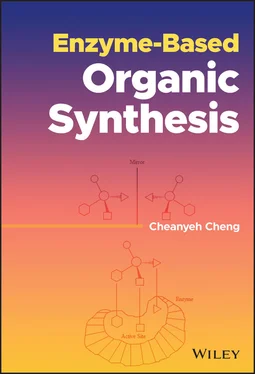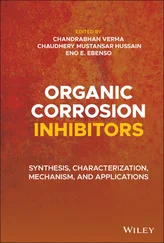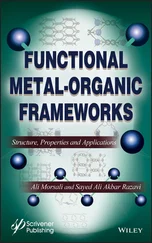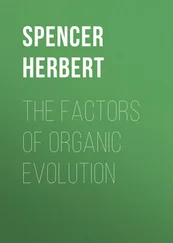Cheanyeh Cheng - Enzyme-Based Organic Synthesis
Здесь есть возможность читать онлайн «Cheanyeh Cheng - Enzyme-Based Organic Synthesis» — ознакомительный отрывок электронной книги совершенно бесплатно, а после прочтения отрывка купить полную версию. В некоторых случаях можно слушать аудио, скачать через торрент в формате fb2 и присутствует краткое содержание. Жанр: unrecognised, на английском языке. Описание произведения, (предисловие) а так же отзывы посетителей доступны на портале библиотеки ЛибКат.
- Название:Enzyme-Based Organic Synthesis
- Автор:
- Жанр:
- Год:неизвестен
- ISBN:нет данных
- Рейтинг книги:3 / 5. Голосов: 1
-
Избранное:Добавить в избранное
- Отзывы:
-
Ваша оценка:
- 60
- 1
- 2
- 3
- 4
- 5
Enzyme-Based Organic Synthesis: краткое содержание, описание и аннотация
Предлагаем к чтению аннотацию, описание, краткое содержание или предисловие (зависит от того, что написал сам автор книги «Enzyme-Based Organic Synthesis»). Если вы не нашли необходимую информацию о книге — напишите в комментариях, мы постараемся отыскать её.
An insightful exploration of an increasingly popular technique in organic chemistry Enzyme-Based Organic Synthesis
Enzyme-Based Organic Synthesis
Enzyme-Based Organic Synthesis
Enzyme-Based Organic Synthesis — читать онлайн ознакомительный отрывок
Ниже представлен текст книги, разбитый по страницам. Система сохранения места последней прочитанной страницы, позволяет с удобством читать онлайн бесплатно книгу «Enzyme-Based Organic Synthesis», без необходимости каждый раз заново искать на чём Вы остановились. Поставьте закладку, и сможете в любой момент перейти на страницу, на которой закончили чтение.
Интервал:
Закладка:

Scheme 2.24 Stereoselective epoxidation of unsaturated bicyclic γ‐lactones.
The epoxidation of cis ‐propenylphosphonic acid (cPPA) by bacterium Bacillus simplex strain S101 has been used for the preparation of fosfomycin that is more delicate, environmentally friendly, and has a higher conversion yield (81.3%) than the large‐scale industrial process (<20%) [98]. The biologically active unsaturated bicyclic γ‐lactones (4,4,6‐trimethyl‐9‐oxabicyclo[4.3.0]non‐2‐en‐8‐one ( 1 a ) and 4,4‐dimethyl‐9‐oxabicyclo‐[4.3.0]non‐2‐en‐8‐one ( 1 b )) were stereoselectively transformed into the corresponding trans ‐epoxylactones (2,3‐epoxy‐4,4,6‐trimethyl‐9‐oxabicyclo[4.3.0]nonan‐8‐one ( 2a ) and 2,3‐epoxy‐4,6‐dimethyl‐9‐oxabicyclo[4.3.0]nonan‐8‐one ( 2b )) by the strain Absidia cylindrospora as shown in Scheme 2.24[99]. These epoxylactones can be further converted to yield hydroxylactones with the secondary hydroxy group. Oleic acid in the lipophilic extractives can be oxidized with Pycnoporus cinnabarinus laccase in the presence of 1‐hydroxybenzotriazole (HBT) to form an epoxy oleic acid at the C 9and C 10double bond. The conversion was 88% after a two‐hour treatment [100].
2.1.6 Sulfoxidation Reactions
There are natural organosulfur compounds such as sulfur containing amino acids (cysteine, methionine, and cystine), allicin, lipoic acid, and unnatural organosulfur compounds such as dibenzothiophene in petroleum products or penicillin in pharmaceutical products. Among the variety of organosulfur compounds, chiral organic sulfoxides (COSs) are useful chiral building blocks or stereodirecting groups in asymmetric synthesis of important pharmaceuticals that contain a functional sulfinyl group attached to the alkyl moieties [101, 102]. However, the preparation of COSs also can be obtained through sulfoxidation by the high regioselectivity and stereoselectivity of enzymes [103]. For example, the purified catalase‐peroxidase (KatG) characterized as a heme‐containing protein from the bacterium Bacillus pumillis was employed for stereoselective oxidation of β‐lactams, represented by penicillin‐G, penicillin‐V, and cephalosporin‐G to their R ‐sulfoxides [104].
The use of co‐expression system that is the co‐expression of formate dehydrogenase from gene originated from Candida boidinii and the cyclohexanone monooxygenase (CHMO) gene cloned from Acinetobacter calcoaceticus NCIMB 9871 in E. coli BL21 has been used as the whole‐cell biocatalyst to selectively synthesize chiral R ‐phenyl methyl sulfoxide ( R ‐PMSO) from thioanisole. In this reaction system, NADPH has also been regenerated to improve the catalytic efficiency [105]. Another strategy was utilized to selectively synthesize corresponding S ‐sulfoxide from p ‐chlorothioanisole as shown by Scheme 2.25[106]. In this investigation, the asymmetric oxygenation of sulfide to S ‐sulfoxide was with co‐expressed E. coli that contains the P450SMO gene from Rhodococcus sp. and the glucose dehydrogenase gene from Bacillus subtilis . In this study, NADPH was efficiently regenerated when glucose was supplied to the reaction.
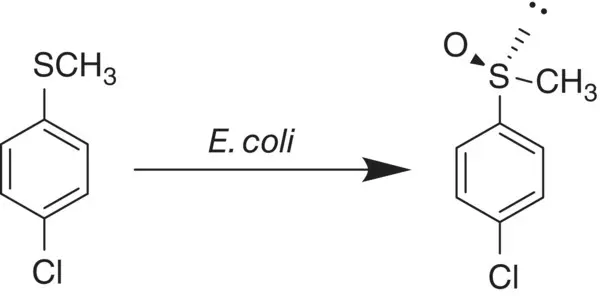
Scheme 2.25 Synthesis of optically pure S ‐sulfoxide by co‐expressed E. coli .
The enantioselective sulfoxidation of benzyl methyl sulfide to its corresponding S ‐sulfoxide was performed by phenylacetone monooxygenase (PAMO) from Thermobifida fusca in a nonconventional Tris‐HCl buffer medium containing hydrophilic organic solvents such as polyethylene glycol (PEG), methanol (MeOH), acetonitrile, iso‐propanol, and alcohol with high conversion rate and moderate e.e.% [107]. The reaction also used glucose 6‐phosphate/glucose‐6‐phosphate dehydrogenase (G6P/G6PDH) as secondary ancillary system for regenerating the NADPH cofactor. An alternative method for producing enantiopure sulfoxides by direct asymmetric oxidation of prochiral sulfides was the optical resolution of racemic sulfoxides [108]. Therefore, S ‐phenyl methyl sulfoxide ( S ‐PMSO) accompanied by a by‐product sulfone was formed at 93.7% ee ( S ) in a fed‐batch reaction with the use of bacterium Rhodococcus sp. ECU0066. For other substrates such as para ‐substituted (methyl and chloro) PMSOs and ethyl phenyl sulfoxide, an S ‐enantioselectivity ( ee ( S )) larger than 99.0% was also obtained.
2.1.7 Baeyer–Villiger Reactions
Baeyer–Villiger (BV) oxidation of ketones is the insertion of a molecular oxygen into the Baeyer–Villiger monooxygenases (BVMOs) [109–111]. BVMO catalyzes the carbonyl group in a compound to form esters, or lactones, from ketones, often with great enantioselectivity [112]. It has been used as an intermediate step for the production of 11‐hydroxyundec‐9‐enoic acid, a precursor for synthesizing Nylon‐11, from ricinoleic acid via recombinant E. coli ( Scheme 2.26) [113]. A variety of secondary metabolites of plants, oxygenated unsaturated carboxylic acids, which are difficult to synthesize were also explored by designing an artificial biotransformation pathway consisting of fatty acid double‐bond hydratases, ADHs, BVMOs, and esterases. In this case, γ‐linolenic acid that contains three double bonds in the carbon skeleton has been used as the substrate for the recombinant E. coli whole‐cell biocatalysis to efficiently produce the target products (6 Z ,9 Z )‐12‐hydroxydodeca‐6,9‐dienoic acid, ( Z )‐9‐hydroxynon‐6‐enoic acid, ( Z )‐dec‐4‐enedioic acid, and (6 Z ,9 Z )‐13‐hydroxyoctdeca‐6,9‐dienoic acid [114].

Scheme 2.26 The multiple enzyme biosynthesis of ω‐hydroxyundec‐9‐enoic acid from ricinoleic acid via Baeyer–Villiger oxidation.
Recombinant E. coli expressing CHMO has been extensively used to investigate BV oxidation of cyclohexanone to ε‐caprolactone ( Scheme 2.27), which can be influenced by not only the efficient regeneration of NADPH but also a sufficient supply of oxygen [115]. The study of the crystal structure of CHMO reported that two crystal structures are found to bind ε‐caprolactone: the CHMO Tightand CHMO Loosestructures [116]. The CHMO Tightstructure determines the substrate acceptance and stereospecificity, and the CHMO Looseis the first structure where the product is solvent accessible. Three regiodivergent BVMOs expressed in E. coli strains have been applied to enantioselectively oxidize a series of cyclic α,β‐unsaturated ketones to produce either chiral enol‐lactones or ene‐lactones, which broadens the scope of BVMO activities [117].
The S ‐selective altered CHMO mutant 1‐K2‐F5 (Phe432Ser) from Acinetobacter sp . NCIMB has been tested in the BV oxidative desymmetrization of a number of structurally different ketones with excellent enantioselectivity [118]. An asymmetric BV bio‐oxidation reaction catalyzed by E. coli has been scaled up to a pilot plant (kg) scale using a new “resin‐based in situ substrate feeding and product removal (SFPR)” methodology with nearly enantiopure form (ee > 98%) and good yield [119]. In this application, racemic bicycle[3.2.0]hept‐2‐en‐6‐one was regiodivergent parallel kinetic resolution to two regioisomeric lactones that the (+)‐bicycle[3.2.0]hept‐2‐en‐6‐one enantiomer is converted into the “expected” (−)‐(1 S ,5 R ) lactone and (−)‐bicycle[3.2.0]hept‐2‐en‐6‐one is converted into the “unexpected” (−)‐(1 R ,5 S ) lactone as indicated by Scheme 2.28. The formation of “expected” lactone means that the oxygen is inserted into the more substituted carbon‐carbon bond of the substrate ketone.
Читать дальшеИнтервал:
Закладка:
Похожие книги на «Enzyme-Based Organic Synthesis»
Представляем Вашему вниманию похожие книги на «Enzyme-Based Organic Synthesis» списком для выбора. Мы отобрали схожую по названию и смыслу литературу в надежде предоставить читателям больше вариантов отыскать новые, интересные, ещё непрочитанные произведения.
Обсуждение, отзывы о книге «Enzyme-Based Organic Synthesis» и просто собственные мнения читателей. Оставьте ваши комментарии, напишите, что Вы думаете о произведении, его смысле или главных героях. Укажите что конкретно понравилось, а что нет, и почему Вы так считаете.
